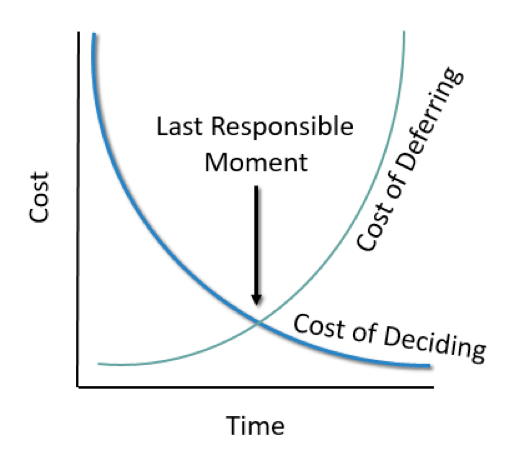The world is changing quickly and the idea of a yearly road-mapping session where you carefully plan out a product release timeline is becoming outdated. With the turn of the new year, we’ve seen many organizations fall into the trap of planning out their yearlong goals in January, then forgetting about them for the rest of the year, or worse, not changing their goals based on what’s happening in the market. While the identification of business goals and challenges is still important, we also know that (at times) it is impossible to predict the answers to your solutions well in advance.
Is goal-setting dead? Not exactly
We believe the key to a successful road-mapping exercise is the understanding that this process should be fluid and revisited throughout the year. It is still important to understand the opportunities your market may present you within the coming year. However, we are saying that you might want to reframe your approach and not try to solve these problems before you have begun to think about them or have the data to prove that a change is needed.
Successful agile project management concepts would even tell us that we need to wait until the “last responsible moment” to make decisions. We suggest that taking a more reactive or just-in-time approach to solving your customers’ problems is the way to go in our quickly changing world. What good is it to develop new features for your product when they are not rooted in data? How can you even begin to know that what you wanted as a business in January is going to be the same in October? Or even February?

As you can see, there is a specific spot where that “last responsible moment” happens.
Today, users expect an almost immediate response and resolution to the issues they are having with your product or site – as seen in the almost daily updates we receive to all the apps that live on our phones. With all the data and testing tools we have at our disposal, we can make decisions faster than we ever have before. Companies like Amazon, Netflix, and Google are champions of this – they are constantly running small optimization tests on their platforms, which provide them the data they need for future feature implementations. They do not push out updates to their platforms quarterly – they are always evaluating how they can make their sites better through customer use data. Creating solutions that solve your customer’s needs in this very moment and deploying them quickly is how you see value in your site or product.
So, is goal-setting dead? Not exactly. It is important to find the balance between those high-level goals that drive your business forward and the shorter-term solutions that help you get there. Knowing when and how to act is the key here. Let the high-level goals be your guiding compass, but also allow yourself to be flexible to what is happening now in your market.
How does your development partner fit into your road-mapping?
Now, we are uniquely situated as your development partner to help you through the entire process of goal-setting (and revisiting those goals throughout the rest of the year). We can provide the unique perspective that helps you fully flush out your ideas, think about your solutions in a different way, and walk you through the potential roadblocks and use cases we have seen other clients encounter. We can even help you prioritize how your high-level goals fit into your current development plan and adjust as needed.
Let us use an example from one of our current clients. During a 2021 road-mapping session, they mentioned they want to implement e-commerce functionality on their website to begin selling a selection of their products fully online. Now, they do not know what that will exactly entail quite yet, but it is a long-term goal they want to work toward. With that information in mind, our development team can be more thoughtful in the way we will continue to develop parts of their project, setting them up for success in the long run.
By making this long-term goal clear to us, even in its early stages, our client is helping us ensure that we not only see short-term success when it comes to development but also helps to prevent future issues that might arise. Also, we were able to discuss how many hours of time will be involved and what the potential budget could be for that part of the project, so there are no surprises for our client when we begin to develop for that specific feature.
The biggest differentiator in making you successful
Engaging your development partner in these conversations can help you to spend time thinking through the problems that matter most to you at this very moment, and to stop spending time on the decisions you might not be making for a long while (or ever). Ultimately, staying in touch with what your customers (and the market) want helps you to be reactive and adapt to their ever-changing needs. Your agility and ability to respond to the needs of the market are going to be the biggest differentiator in making you successful, plain and simple.
Interested in working with our talented team of professionals to help accelerate your business toward its goals and provide you with value sooner? Reach out to us today to get started!






